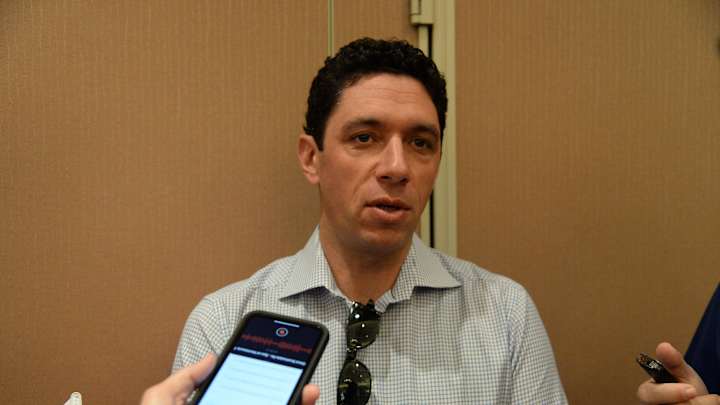Texas Rangers Offseason Guide: Getting a Sense of the Budget

Every winter, fans clamor for their favorite teams to open up their pocketbooks and shell out enormous amounts of money for the best players on the market. After all, they must be worth it, right?
Sometimes they are and sometimes they're not. Remember when everyone wanted the Rangers to throw everything at Jake Arrieta? Now we all sigh in relief that Texas doesn't have that terrible contract on the books.
The past two offseasons, Jon Daniels was very open that Texas would not play in the top of the market. The ball club wanted to get a closer look at what they had internally while they made efforts to restock their farm system. The rebuild was thrust into high gear.
After a three seasons of sub-.500 baseball, and on the verge of opening a brand new ballpark, the Rangers are ready to spend again. The question on everyone's mind is how much?
Estimates range between $40-$50 million is the Rangers' budget this winter. But let's take a closer look. Here is the current Rangers' estimated payroll.
The Rangers currently sit at an estimated $117 million on the books for 2020, which is dedicated to the 39 players on the 40-man roster. Adrian Sampson, though he's still on the roster officially, was taken off this list because of his pending deal with the Lotte Giants in the KBO in South Korea.
The light-blue numbers are projected salaries for players that are eligible for arbitration and the dark blue numbers for Ronald Guzman and Isiah Kiner-Falefa are their 2019 salaries and will likely earn around the same, but likely to earn a slight raise. The $563,500 figure is the projected league minimum salary in 2020 by Baseball Reference.
Jon Daniels has said that the payroll will increase and they will play at the top of the market this winter. The highest the Rangers' payroll has ever been is just north of $163 million in 2017. Let's just say hypothetically the Rangers are setting their 2020 payroll at that $163 million mark. Given the estimated $117 million and free roster spot, that gives Texas $46 million to spend this offseason. So, that $40-$50 million estimate is almost dead on.
Not to dampen anyone's spirits, but considering all that Texas wants to address this winter, $46 million is not that much to spend. Let's be optimistic and say Texas lands top free agent Anthony Rendon for $30 million per season. That gives Texas only $16 million to spend without beginning to address the starting rotation, which is a very big need.
In order for Texas to fully address what they need to this winter, they will have to get creative or just flat out increase their payroll significantly. Given inflation from 2017 to 2020, it's conceivable that Texas could get north of $170 million, but that's purely conjecture. Jon Daniels, nor anyone in the Rangers' front office has confirmed a budget number with the media.
It seems like we've done this every winter, but will this be the offseason where Texas trades away Shin-Soo Choo to put some money back in the payroll? Texas would likely have to eat some of that money, but it would free up the log jam in the outfield and give more at-bats to young players like Willie Calhoun. Of course, it is the last year of Choo's contract, so they could inflate payroll a bit this season knowing that contract is off the books after 2020.
There hasn't been any sense around the team that they would trade away Choo, but all options are on the table for Texas. They are wanting to compete in 2020 and will have to make some potentially unpopular choices in order to do so.
There are a lot of different ways the Rangers could go to upgrade this team. After restocking their farm system the past few seasons, finding a trade partner is another solution. We wrote about some potential trade targets Texas could look at to upgrade some positions of need.
One thing is for certain: Texas will be in the discussion for a lot of players. So turn on your notifications. It's going to be a busy winter...hopefully.
Follow SI Rangers Maven on Twitter: @RangersMavenSI
